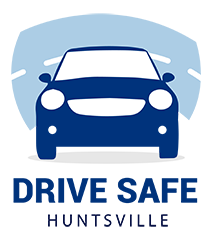Freeways and Highways

You might be wondering why driving on freeways and highways is considered challenging driving. After all, you will probably find yourself on the highway many times over the course of your driving career. Much of the time, you’ll be driving along on a bright, sunny day on dry pavement. Where’s the challenge?
IT ALL COMES DOWN TO SPEED.

On the freeways, everything happens faster. With more speed comes less time to react. That mattress that fell off the car ahead will reach you – or you will actually reach it – sooner than you would in regular neighborhood traffic.
When you see that you need to slow down, or stop, you will need much more time and space to do it safely. The trouble is you may not have it. And, of course, drivers are careless on highways just as they are on city streets or even rural roads. Now, though, at 65 miles per hour, you must notice someone else’s bad behavior and adjust to the problem before it becomes a risk or imminent threat. You must do this in what seems like an instant, otherwise, a crash may be likely. How far do you think debris will fly or a vehicle will roll at 65 miles per hour? How will the occupants fare, especially if they are not wearing seatbelts?
Other than driving at higher rates of speed, there are certain things you can expect when it comes to freeways. There will be multiple travel lanes going in each direction, and the direction of travel will typically be separated by some physical barrier like a median strip. Chances are, you won’t have to worry about stop signs and traffic crossing in front of you to get from one side of the freeway to the other. You will probably not see a lot of twists and turns in the road and will be on long stretches of straight road. In many respects, this can make your trip even more dangerous. Long straight routes with little signage makes for a boring drive. Many drivers will let down their guards. Good defensive drivers won’t.

While out on the freeway, you’ll encounter other passenger vehicles, SUVs, all kinds of trucks, and motorcycles. So, while it may appear boring on the surface, a trip on the highway is anything but. Always use your scanning techniques, increase your following distances, and be extra aware of the actions of drivers all around you.
Before you can drive along a freeway, you have to be on it.
Consider these guidelines for entering and exiting the freeway:
- You will always enter or exit a freeway using one way ramps. Always be sure you are on the correct ramp. The driver who uses the wrong ramp to enter a freeway quickly becomes a wrong way driver.

- Many ramps have sharp turns in them. Adjust your speed accordingly.
- As you approach the freeway, carefully observe the existing traffic and begin to accelerate.
- Most freeways have acceleration lanes. These allow you to get up to the speed of existing traffic before you merge with it.
- As you enter and pass along the acceleration lane, try to match the speed of the vehicles in the travel lane closest to you.
- Activate your turn signal and watch for a space big enough for you to safely enter traffic. You must yield to traffic that is already traveling on the freeway.
- Drivers in the travel lane you want to enter should leave enough room for your vehicle. Not everyone will.
- When your path is clear, transition gradually from the acceleration lane into the travel lane closest to you and adjust your speed for the pace of the existing traffic.
- Never stop at the end of an entrance ramp or acceleration lane unless traffic is so heavy that you absolutely have
- If there is a yield sign and no acceleration lane, obey the yield sign as you normally would. This can even mean stopping if there is not yet space for you to safely enter traffic. NEVER force your way into traffic, especially just because you have a line of cars waiting behind you. You are the driver and you proceed when you see it is safe.
- At some point, it will be time to exit the freeway. Know where your exit is ahead of time. Don’t wait until you’re on top of the exit ramp – or worse, past
- When you know your exit is approaching, move to the right well in advance. For left side exits, move, of course, to the left. Never cross more than one lane of traffic to take an exit. If you miss the ramp, continue on past your exit, take the next one, and double back. You can even simply adjust your route.
- Gradually reduce your speed and activate your directional well in advance of the exit ramp. Do not surprise other drivers with sudden, last minute moves. Make your intentions known.
- If there is a deceleration lane, start to slow and signal even before you reach that. Remember, you may be bringing your vehicle from 65 miles per hour to 25. This takes time.
- Expect anything once you get onto the exit ramp. Again, with sharp curves, you may not see traffic stopped up ahead. A disabled vehicle may have also pulled off of the freeway but could only make it part way along the exit ramp.
When you are safely in a travel lane, remain there if you can and try not to be impatient. You have learned about making safe lane changes. But weaving in and out of freeway traffic means making multiple lane changes. Only one of those needs to be unsafe for you to have, or cause, a big problem.
Remember that freeway lanes on the right are for travel. Far left lanes are typically used just for passing. If you drive in a passing lane for too long, you may be cited for driving in a passing lane. You’ll learn a bit more about this in the traffic laws section. If you are driving more slowly than the pace of traffic, stay in the far right lane. Slow drivers are a chief cause of crashes. This is because drivers around them are forced to make more lane changes and risky passing moves. The more of these moves you see on the road, the higher a chance of mishaps.
If you are driving much slower than the flow or traffic or even the speed limit, think about why. If your vehicle is acting up, be sure to have your emergency flashers on and attempt to exit the freeway as soon as you can. What about nerves, though? If you are driving slowly because you are nervous about freeway driving, consider an alternate route. Also think about why you are nervous. Is it inexperience? Are you uncomfortable driving at higher speeds. One thing you should never be as the driver is nervous. Remember, you are responsible for you and your occupants. You’re the one in charge.
Never park along the side of any freeway unless your vehicle is disabled. Even then, make every attempt to exit the freeway if possible. If you must stop, pull completely off to the side and out of travel lanes. If you raise your hood or open up your vehicle’s trunk, passing law enforcement officers will see that you are disabled. They may stop anyway, just because you are not supposed to be there. Tying a white cloth to your antenna or door handle or putting out a flare or reflector is also a sure sign that you need help.
